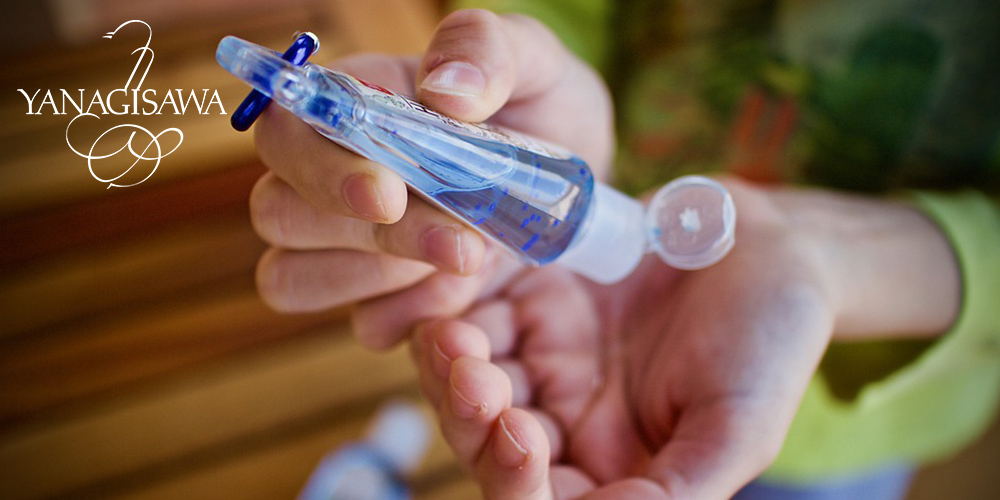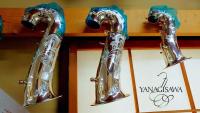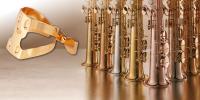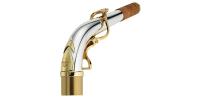Hand Sanitiser & Your Saxophone!

Following our recent saxophone disinfection advice – available to read here or below – outlining the safest methods for using disinfectants to clean saxophones, Yanagisawa – Japan have continued their research to test hand sanitisers containing different chemical components and the level of damage they can cause to saxophone finishes.
The results confirm the earlier advice (see article below) that ETHANOL-BASED DISINFECTANTS AND SANITISERS ARE THE SAFEST CHEMICAL with which to clean and handle saxophones and their parts.
The regular use of hand sanitiser has become part of our daily routine while living in a world with COVID-19. Initial investigations show that some hand sanitisers can cause tarnishing and/or corrosion when left on the surface of your instrument. Yanagisawa have tested the endurance of lacquer finish against sanitisers containing different chemical components and verified their findings.
Chemicals:
- Ethanol for disinfection: Light change on the surface after 24 hours from adherence.
- Approx 70% of ethanol + Glycerin-fatty acid ester 0.1% + Glycine 0.1% + Sodium emulsified 00.24% + others: Major colour change of the base metal.
- Chlorine bleach: Lacquer starts to come off after 21 days.
- Chlorine dioxide: Significant lacquer tarnishing 15 hours after adherence. Reacted the most compared to other chemicals.
Please note: Content rate and/or components in chemicals differ across manufacturer samples used. The results should therefore be used as a guideline.
Aim to use ETHANOL-BASED DISINFECTANTS AND SANITISERS AS THEY ARE THE SAFEST CHEMICAL with which to clean and handle saxophones and their parts. In fact, this experiment highlights that 100% ethanol chemicals result in almost no altering of saxophone finishes.
Ethanol-based disinfectants and sanitisers containing other chemical components showed some of the following results when not removed from lacquer after approximately three weeks: 1. Light change on the surface 2. Lacquer starts to loosen 3. Lacquer starts to come off.
It is therefore important to ensure the best practice of removing all residue of sanitiser and disinfectant after cleaning or handling your saxophone.
The results also confirm that CHLORINE-BASED DISINFECTANTS AND SANITISERS DO CAUSE CONSIDERABLE DAMAGE and should therefore be avoided when cleaning and handling saxophones and other woodwind instruments and accessories.
-
Original article posted 2nd December 2020:
Disinfection Advice from Yanagisawa Saxophones – Japan.
Saxophone care and cleaning is – as it has been all year – an all-important factor in helping reduce the risk of virus transmission.
Here’s some advice from Yanagisawa about the most effective and safe methods of using disinfectants on saxophone instruments, components and accessories.
Yanagisawa’s research has found that applying antiseptics – especially chlorine-based disinfectants – can result in instrument discolouration and deterioration. The Japanese saxophone manufacturer therefore recommends the following advice and set of best practices to ensure your saxophone remains hygienic but does not become damaged or discoloured.
• DO NOT use chlorine-based disinfectants. Ingredients contained within chlorine-based disinfectants may lead to corrosion, deterioration, discoloration, lacquer staining, peeling, etc.
• DO NOT directly spray or apply any types of disinfectant directly onto your saxophones body or components.
• DO NOT soak any components (including mouthpieces). If disinfectant enters the key system, it may cause damage or deterioration. Pay particular attention not to apply disinfectant to pads and corks as these are particularly susceptible to damage.
• DO NOT use chlorine or ethanol-based antiseptics on Ebonite mouthpieces or Yany SIXS ligatures (features ebonite spacers). In addition, do not use heat, such as hot water, steam, microwave, oven, etc. for disinfection. There is a risk of discoloration and deformation.
• DO use ethanol-based disinfectants. Gently wipe your sax body and mouthpiece with ethanol-based disinfectant soaked in a SOFT, non-abrasive cloth. Immediately wipe off the instrument using a DRY, non-abrasive cloth – removing all residue.
• DO make sure your hands are thoroughly dried after disinfection and before touching your instrument. Disinfectant remaining on your fingers may cause corrosion or damage, especially around thumb rest, thumb hook and side key areas - these are at a higher risk of discolouration and deformation.





